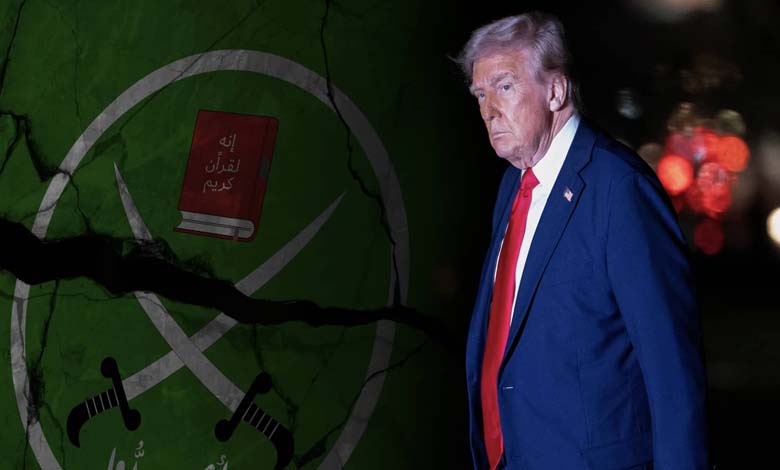The United States and the designation of the Muslim Brotherhood as a terrorist organization… Three steps needed to strengthen the process

The effort to classify the Muslim Brotherhood as a terrorist organization has moved to the center of American politics after President Donald Trump signed an executive order establishing a clear path on the matter.
As the U.S. administration proceeds with designating the Brotherhood’s branches in Egypt, Jordan, and Lebanon as foreign terrorist organizations, the challenge extends beyond the question of necessity and shifts toward the mechanisms of implementation in partnership with allies, aiming to achieve maximum security benefits, according to the American journal National Interest.
The Muslim Brotherhood represents a global interconnected network clearly linked to violent extremism. Former FBI director Robert Mueller previously testified before Congress that “elements of the Brotherhood, inside the United States and abroad, have provided support for terrorism.”
The recent discovery of a Brotherhood-affiliated terrorist cell in Jordan has added to the body of evidence, revealing details related to financing, leadership, and violent activities spanning multiple countries in the region.
Moreover, countries such as the United Arab Emirates, Egypt, Saudi Arabia, and Russia have already designated the Brotherhood as a terrorist organization, relying on extensive records documenting its role in supporting and enabling terrorism, as confirmed by a 2015 British government report.
These states share the assessment that the movement resorts to violence when it serves its political agenda, while maintaining a discourse of “non-violence” as a cover.
The effectiveness of the anticipated U.S. designation will depend on adopting a coordinated approach, not unilateral actions, but one based on close cooperation with regional partners.
In this context, a proposal has emerged calling for a gradual approach resembling a comprehensive strategy to confront the movement on all levels, according to National Interest.
The first step is to develop a shared understanding with countries that have already designated the Brotherhood, in order to identify the entities and individuals who should be placed on terrorist lists, and to target financing, recruitment, and operational support networks for violent groups.
The second step involves expanding counterterrorism cooperation to include states that maintain relations with the Brotherhood.
The third step stresses the need to accompany the designation with intensive diplomatic efforts to prevent unintended consequences. However, such diplomatic flexibility must be paired with a firm American stance based on “zero tolerance” toward any support for terrorism, sending a clear message both within the region and beyond.
According to the journal, a coordinated approach to designating the Muslim Brotherhood could become a unifying element within the Middle East’s regional security architecture, rather than deepening divisions. Countries that view the movement as an existential threat, such as Egypt, the UAE, and Saudi Arabia, could cooperate with states that maintain more balanced ties with the Brotherhood to establish a common framework, National Interest reports.
With carefully planned implementation based on coordination, clear prioritization, and sustained diplomatic engagement, the designation of the Muslim Brotherhood could become a foundational step in building a more resilient security architecture for the region.












